
漢德百科全書 | 汉德百科全书
 International cities
International cities


 China
China

 Financial
Financial
 ***Global Financial Center
***Global Financial Center

 History
History
 M 1500 - 2000 AD
M 1500 - 2000 AD

 History
History
 N 2000 - 2100 AD
N 2000 - 2100 AD
 Hongkong Tebiexingzhengqu-HK
Hongkong Tebiexingzhengqu-HK

 International cities
International cities
 ***Global Urban Economic Competitiveness
***Global Urban Economic Competitiveness

 Party and government
Party and government
 Shanghai-Hong Kong Stock Connect
Shanghai-Hong Kong Stock Connect

 Sport
Sport
 The Ocean Race
The Ocean Race

 Vacation and Travel
Vacation and Travel

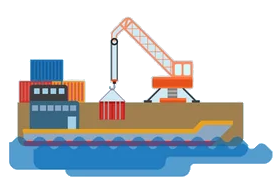 Important port
Important port



Hongkong, Abk.: HK (chinesisch 香港, Pinyin Xiānggǎng, Jyutping Hoeng1gong2, kantonesisch Hêng1gong2, Yale Hēunggóng, englisch Hong Kong ‚Duftender Hafen‘, Abk.: 港), ist eine Metropole und Sonderverwaltungszone an der Südküste der Volksrepublik China im Mündungsgebiet des Perlflusses. Mit über sieben Millionen Einwohnern auf 1104 Quadratkilometern und einem bedeutenden Wirtschafts- und Finanzsektor zählt Hongkong zu den Weltstädten. 95 Prozent der Einwohner Hongkongs sind chinesischer Abstammung mit überwiegend kantonesischer Muttersprache.
Hongkong wurde während des Ersten Opiumkriegs 1841 vom Vereinigten Königreich besetzt und durch den Vertrag von Nanking 1843 zur britischen Kronkolonie erklärt. Für viele Chinesen war die britische Kolonie Zufluchtsort vor dem Chinesischen Bürgerkrieg 1927 bis 1949. Im Jahr 1997 erfolgte die Übergabe der Staatshoheit an die Volksrepublik China. Seitdem ist Hongkong eine chinesische Sonderverwaltungszone unter Beibehaltung einer freien Marktwirtschaft und hoher innerer Autonomie.
Die am dichtesten besiedelten Gebiete sind die Halbinsel Kowloon und der Norden von Hong Kong Island, die durch die schmale Meerenge Victoria Harbour getrennt sind. Zu den New Territories gehören das ursprüngliche Hinterland nördlich von Kowloon, das die größte Fläche Hongkongs ausmacht, und die meisten der 263 Inseln Hongkongs. Die größte Insel Hongkongs ist Lantau Island, in deren Nähe sich auch der Hong Kong International Airport, auf der Insel Chek Lap Kok, befindet.
Das Bevölkerungswachstum und die geringe bebaubare Fläche Hongkongs führten zu großflächiger Landgewinnung durch Aufschüttung im Meer und zur Entstehung einer Skyline aus Wolkenkratzern. Nach der Errichtung mehrerer Planstädte in der zweiten Hälfte des 20. Jahrhunderts lebt die Hälfte der Einwohner Hongkongs in den New Territories.[6]
Hongkong gilt als eine der Städte mit den weltweit höchsten Lebenshaltungskosten.[7]
香港(简称港,雅称香江;英语:Hong Kong,缩写作 HK、HKG、HKSAR)是中华人民共和国两个特别行政区之一,位于南海北岸、珠江口东侧,北接广东省深圳市,西面与邻近的澳门特别行政区相距63公里,其余两面与南海邻接。
全境由香港岛、九龙和新界组成,其中香港岛北为最发达地区;地理环境上则由九龙半岛等大陆土地、以及263个岛屿构成[4],人口约741万人(2017年底)[6]。
1842年,大清国与英国签订《南京条约》[12],永久割让香港岛;后再签订《北京条约》和《展拓香港界址专条》,分别割让九龙和租借新界,这些由英国统治的地区构成现今香港的治理范围。二战期间,香港曾被日本占领约三年零八个月。1997年7月1日,香港移交中华人民共和国,并成立香港特别行政区,实行港人治港、高度自治,仅有国防、外交事务由中央政府直接管辖。[注 3][注 4]
香港开埠前,未计九龙和新界,香港岛已经是一个有数千人口的小岛[13]。英国人看中维多利亚港是一个水深港阔、四季不结冰,而且不在地震带的天然良港。1842年,大清国在鸦片战争中战败后,分阶段割让和租借香港土地予英国,英国人开始统治及发展香港,使香港从一个荒芜、地瘠山多且天然资源缺乏的小渔村,逐渐发展成一个转口港,成为欧洲各国商船向中国进行鸦片及其他商品贸易的枢纽,而且不受清朝末年的乱局影响。同时,孙中山在香港先后成立兴中会和同盟会,为后来推翻大清打下基础。
太平洋战争期间,日本攻占香港,占领持续三年零八个月。1945年,日本投降,香港重光,英国恢复对香港行使主权。香港基于殖民地身份和地理环境下,又一次避免受到中国长期战乱影响;太平天国[14]、军阀割据、国共内战、阶级斗争、大跃进运动和文化大革命期间,大量中国难民逃港。香港在1970年代经济起飞,逐步发展成亚太地区之国际大都会及国际金融中心,获誉为亚洲四小龙和纽伦港[注 5]之一。根据《中英联合声明》,中华人民共和国从1997年7月1日起在香港实行“一国两制”的基本国策,《香港基本法》说明香港不实行社会主义,保持原有资本主义制度和生活方式五十年不变。除国防和外交由中国中央政府管理,香港实行高度自治,香港享有行政管理权、立法权、独立的司法权、终审权以及参与国际事务的权利[15]。然而,近年一部分香港人对特区政府及中国政府的信任度每况愈下[16],这些人认为中国政府高压权威令“港人治港、高度自治”及“一国两制”遭到质疑[17]。
香港是全球具有重要地位、以工商业为主的现代化国际金融、服务业及航运中心,连续24年蝉联全球最自由经济体[18][19],并以优良治安、廉洁社会、简单税制和健全的普通法制度而闻名于世[20][21][22],因此有“东方之珠”的美誉,更是在2016年GaWC公布的世界全球都市列表中,位于中国第一位。“亚洲国际都会”则为官方定位的香港品牌。香港同时为全球其中一个最安全[23]、经济最发达、生活水平最高、竞争力最高[24]、最适宜居住[25]及人均寿命最长[26]的大都会。空气污染、贫富悬殊、双普选进展[注 6]等则为该地主要的社会议题[27][28][29]。
中華人民共和国香港特別行政区(ちゅうかじんみんきょうわこくホンコンとくべつぎょうせいく)、通称香港(ホンコン、中国語: 香港; イェール式広東語: Hēunggóng; ピン音: Xiānggǎng、英語: Hong Kong)は、中華人民共和国の南部にある特別行政区(一国二制度)である。同じ特別行政区の澳門からは南西に70km離れている[2]。東アジア域内から多くの観光客をひきつけ、150年以上の植民地の歴史で世界に知られる。
広大なスカイライン及び深い天然の港湾を抱える自由貿易地域であり、1,104 km2 (426 sq mi)の面積に700万人を超す人口を有する世界有数の人口密集地域である[3]。
Hong Kong (Chinese: 香港; Cantonese: [hœ́ːŋ.kɔ̌ːŋ] (![]() listen)), officially the Hong Kong Special Administrative Region of the People's Republic of China, is a specially administered territory on the eastern side of the Pearl River estuary in southern China. With over 7.4 million people of various nationalities[c] in a territory of 1,104 square kilometres (426 sq mi), Hong Kong is the fourth-most densely populated region in the world.
listen)), officially the Hong Kong Special Administrative Region of the People's Republic of China, is a specially administered territory on the eastern side of the Pearl River estuary in southern China. With over 7.4 million people of various nationalities[c] in a territory of 1,104 square kilometres (426 sq mi), Hong Kong is the fourth-most densely populated region in the world.
Hong Kong was formerly a colony of the British Empire, after Qing China ceded Hong Kong Island at the conclusion of the First Opium War in 1842.[16] The colony expanded to the Kowloon Peninsula in 1860 after the Second Opium War and was further extended when Britain obtained a 99-year lease of the New Territories in 1898.[17][18] The entire territory was returned to China when this lease expired in 1997.[19] As a special administrative region, Hong Kong's system of government is separate from that in mainland China.[20]
Originally a lightly populated area of farming and fishing villages,[16] the territory has become one of the most significant financial centres and trade ports in the world.[21] It is the world's seventh-largest trading entity[22][23] and its legal tender, the Hong Kong dollar, is the 13th-most traded currency.[24] Although the city boasts one of the highest per capita incomes in the world, it suffers severe income inequality.[25]
The territory features the largest number of skyscrapers in the world, most of them surrounding Victoria Harbour.[26] Hong Kong ranks 7th on the UN Human Development Index and has the seventh-highest life expectancy in the world.[9] Over 90% of its population makes use of well-developed public transportation,[27] but air pollution from neighbouring industrial areas of mainland China has resulted in a high level of atmospheric particulates.[28]
Hong Kong (chinois : 香港 ; pinyin : ; Wade : Hsiang¹-kang³ ; cantonais Jyutping : Hoeng¹gong² ; cantonais Yale : Hēunggóng ; littéralement : « port aux parfums » ou « port parfumé »), officiellement Région administrative spéciale de Hong Kong de la République populaire de Chine, est la plus grande et la plus peuplée des deux régions administratives spéciales (RAS) de la République populaire de Chine (RPC), l'autre étant Macao. Elle compte environ sept millions d'habitants que l'on appelle Hongkongais (en anglais : Hongkongers) dont l'espérance de vie, de 84,2 ans, est la plus longue au monde en 20172,3,4.
Hong Kong est située sur la rive orientale de la Rivière des Perles, sur la côte sud de la Chine et elle est baignée par la mer de Chine méridionale. Elle jouxte la province du Guangdong au nord. Hong Kong est la huitième entité commerciale5 et le 3e centre financier au monde6. Son économie est considérée comme la plus libérale au monde depuis 1995 selon la fondation américaine « Heritage Foundation »7,8. Hong Kong se place ainsi dans le rang des grands centres financiers du monde avec entre autres New York et Londres, cette trilogie est d'ailleurs appelée par certains médias anglophones « Nylonkong »9.
Colonie britannique à partir du traité de Nankin (1842), rétrocédée à la Chine en 1997 soit 155 ans plus tard, Hong Kong demeure radicalement différente du reste de la République populaire de Chine. Une loi fondamentale particulière détermine son régime politique. Elle obéit au principe « un pays, deux systèmes », qui permet à Hong Kong de conserver son système légal (common law), sa monnaie (dollar de Hong Kong), son système politique (multipartisme), ses équipes sportives internationales, ses lois sur l'immigration, son domaine internet (.hk), son indicatif téléphonique (+852) et son code de la route (conduite à gauche). Selon les termes de la déclaration sino-britannique commune, la Chine a promis que Hong Kong garderait une relative autonomie jusqu'à au moins 2047, soit 50 ans après le transfert de la souveraineté.
En tant que ville mondiale, Hong Kong compte environ 34 000 résidents britanniques (ils étaient 25 500 en 1996, juste avant la rétrocession)10, environ 22 000 résidents japonais11, environ 60 000 résidents américains12, environ 300 000 résidents canadiens13 et entre 18 000 et 20 000 résidents français14. La majorité est composée d'expatriés employés par des multinationales ou des entrepreneurs installés avec leurs familles. Le chinois (cantonais)15 et l'anglais sont les deux langues officielles de la ville16.
Hong Kong (pr. cantonese [hœːŋ˥.kɔːŋ˧˥], pr. italiana /onˈkɔnɡ/[6]; in mandarino 香港S, XiānggǎngP, letteralmente "porto profumato") è, come Macao, una regione amministrativa speciale della Cina.
Situata sulla costa meridionale della Cina tra il delta del fiume delle Perle e il Mar Cinese Meridionale,[7] la città è famosa per la sua preponderante skyline e per il profondo porto naturale. Con una superficie di 1.104 km2 e una popolazione di sette milioni di persone, Hong Kong è una delle aree più densamente popolate del mondo.[8] Il 95% della popolazione di Hong Kong è di etnia cinese, mentre il restante 5% appartiene agli altri gruppi.[9] Il gruppo etnico cinese maggioritario della città, gli Han, ha origine principalmente nelle città di Canton e Taishan nella vicina provincia del Guangdong.[10]
Hong Kong divenne una colonia dell'Impero britannico dopo la prima guerra dell'Oppio (1839-1842). Originariamente limitati alla sola Isola di Hong Kong, i confini della colonia furono estesi, nel 1860, a includere la penisola di Kowloon e poi con nuovi territori nel 1898. La regione fu poi brevemente occupata dal Giappone durante la guerra del Pacifico, per poi tornare sotto il controllo britannico, terminato nel 1997 quando la Cina ne ha ripreso la supervisione.[11][12] La storia di Hong Kong ha profondamente influenzato la sua cultura, che spesso viene descritta come "l'Oriente che incontra l'Occidente",[13] e il sistema educativo che ha perseguito il sistema inglese fino alle riforme attuate nel 2009.[14]
In base al principio "una Cina due sistemi", Hong Kong possiede un sistema politico diverso dalla Cina continentale.[15] Il funzionamento dell'indipendente magistratura del paese funziona secondo il modello di ordinamento giuridico del Common law.[16][17] La Hong Kong Basic Law, il suo documento costitutivo, stabilisce che la regione goda di un alto grado di autonomia in tutti gli aspetti, tranne che nelle relazioni estere e nella difesa militare.[18][19] Nonostante Hong Kong possieda un sistema multipartitico fiorente, un piccolo elettorato controlla la metà della sua legislatura. Il Chief Executive of Hong Kong (Capo Esecutivo di Hong Kong), il capo del governo, è scelto da un comitato elettorale che varia da 400 a 1.200 membri, un sistema che sarà in vigore per tutti i primi 20 anni di dominio cinese.[20][21][22][23]
Hong Kong è uno dei centri finanziari internazionali più importanti del mondo e vanta una sviluppata economia capitalistica basata sul settore terziario e caratterizzata da una bassa imposizione fiscale e dal libero scambio. La valuta, il Dollaro di Hong Kong, è l'ottava valuta più scambiata al mondo.[24] La mancanza di spazio e il crescente numero di abitanti e di infrastrutture, hanno portato la città ad avere una intensa densità di costruzioni, rendendola la città più verticale al mondo.[25] I cittadini di Hong Kong vantano uno dei redditi pro capite più alti al mondo.[26][27] La densità ha portato anche allo sviluppo di una avanzata rete di trasporti pubblici. I cittadini che ne usufruiscono sono superiori al 90%,[28] la percentuale più alta al mondo.[29] Hong Kong gode alte posizioni in numerose classifiche internazionali. Per esempio, nella libertà economica, nella competitività economica e finanziaria, nella qualità di vita, sul contrasto alla corruzione e nell'indice di sviluppo umano, la regione è sempre classificata fra i primi posti.[30][31][32][33][34][35][36] Secondo le stime sia dell'ONU sia dell'OMS nel 2012 Hong Kong ha avuto la più lunga aspettativa di vita di qualsiasi altra regione del mondo.[37]
Hong Kong,6 oficialmente Región Administrativa Especial de Hong Kong de la República Popular China (en chino: 中華人民共和國香港特別行政區: Zhōnghuá rénmín gònghéguó xiānggǎng tèbié xíngzhèngqū; en inglés: Hong Kong Special Administrative Region of the People's Republic of China), es una de las dos regiones administrativas especiales que, junto con las veintidós provincias, cinco regiones autónomas y cuatro municipios, conforman la República Popular China. Está formada por una península y varias islas situadas en la costa sur del mar de la China Meridional, en el delta del río Perla, 100 km al sudeste la ciudad de Cantón y al este de la región administrativa especial de Macao.7 Con una superficie total de 1108 kilómetros cuadrados2 y una población de más de 7,3 millones de personas,8 se ubica como el cuarto Estado o territorio soberano más densamente poblado del mundo.
La otra región administrativa especial de China es la antigua colonia portuguesa de Macao. En estas dos regiones administrativas especiales se aplica el modelo administrativo conocido como «un país, dos sistemas» (一國兩制).910 Este modelo, del ideólogo Deng Xiaoping, pretendía que se aplicara a una eventual reunificación con la Isla de Taiwán. Consiste en el mantenimiento de un sistema económico capitalista bajo la soberanía de un país de ideología oficialmente comunista. Además del sistema económico, estas dos regiones mantienen un sistema administrativo y judicial independiente, e incluso su propio sistema de aduanas y fronteras externas.11
Después de la primera guerra del Opio (1839-1842), Hong Kong se convirtió en colonia británica con la cesión perpetua de la isla de Hong Kong, seguido por la península de Kowloon en 1860 y un arriendo de 99 años de los nuevos territorios a partir de 1898. Hong Kong fue más tarde ocupada por Japón durante la Segunda Guerra Mundial hasta que el control británico se reanudó en 1945. A principios de los años ochenta, las negociaciones entre el Reino Unido y China dieron lugar a la Declaración Conjunta Sino-Británica de 1984, que allanó la transferencia de la soberanía de Hong Kong en 1997, cuando se convirtió en una región administrativa especial (SAR) con un alto grado de autonomía.12
Hong Kong es uno de los centros financieros más importantes del mundo, con la puntuación más alta del índice de desarrollo financiero y consecuentemente se ubica como la entidad económica más competitiva y laissez-faire del mundo en el Anuario Mundial de Competitividad.13141516 Su moneda de curso legal, el dólar de Hong Kong, es la novena divisa más intercambiada del mundo.17 La economía, dominada por el sector terciario de Hong Kong, se caracteriza por una tributación simple con un nivel competitivo de impuesto de sociedades y apoyada por la confianza internacional en su sistema judicial independiente en el que el estado de derecho, no regido por ley, se aplica a los procedimientos legales y contractuales.18 Sin embargo, mientras que Hong Kong tiene uno de los mayores ingresos per cápita en el mundo, sufre de la más grave desigualdad de ingresos entre las economías desarrolladas.19



Sheffield [ˈʃɛfiːld] ist eine britische Stadt in South Yorkshire, in der Region Yorkshire and the Humber im Vereinigten Königreich. Ihr Name leitet sich aus dem River Sheaf ab, der durch den Zusammenfluss des Totley Brook und des Old Hay Brook entsteht. Mit 589.214 Einwohnern (2020) zählt sie zu den größten Städten in England. Sheffield besitzt den Status einer City und ist ein Metropolitan Borough im Metropolitan County South Yorkshire. Die Metropolregion Sheffield hat rund 1,2 Millionen Einwohner. Sheffield war einer der Ursprungsorte der Industriellen Revolution und über mehr als ein Jahrhundert ein weltbekanntes Zentrum der Stahlindustrie. Vom Strukturwandel nach Niedergang der Schwerindustrie in den 1970er und 1980er Jahren wurde die Stadt hart getroffen, erlebt aber seit der Wende zum 21. Jahrhundert einen erneuten Aufschwung. Auch im Bereich der Musik ist Sheffield bedeutend.

Cincinnati [ˌsɪnsɪˈnætɪ] (deutschsprachig veraltet Zinzinnati) im US-Bundesstaat Ohio ist eine der bedeutendsten Handels- und Fabrikstädte der Vereinigten Staaten, genannt die „Königin des Westens“. Sie ist Verwaltungssitz des Hamilton County. Bei der Volkszählung 2020 hatte sie 309.317 Einwohner.[1] Der Großraum Cincinnati reicht bis in die benachbarten Bundesstaaten Kentucky und Indiana und hat annähernd zwei Millionen Einwohner.
辛辛那堤(英语:Cincinnati,/ˌsɪnsɪˈnæti/)是美国俄亥俄州汉密尔顿县的县府。辛辛那堤建立于1788年,位于俄亥俄州与肯塔基州边界的俄亥俄河北岸,靠近印第安纳州。在2010年的人口普查中,该市的城市居民人口数为296,954人,是俄亥俄州第三大的城市。据2010年美国人口普查,辛辛那堤城市圈人口数已达2,172,191人,是全美排名第28的都会区,也是俄亥俄州最大的都会区。
19世纪初期,辛辛那堤是中部地区第一个能与沿海大城市在面积和财力上一较高下的新兴城市。作为美国首个内陆大都市,辛辛那堤被看作是第一个纯粹的美国城。早期的辛辛那堤市没有多少欧洲移民居住,也没有像其他东部城市一样受到欧洲移民太多的影响。然而,19世纪末期,随着交通方式由蒸汽船运输向铁路运输转变,辛辛那堤市的发展速度急剧放缓,该市的人口数量和州内影响力也被另一个内陆城市-芝加哥超越。
辛辛那堤有两支职业球队,MLB辛辛那堤红人和NFL辛辛那堤孟加拉虎(过去还有NBA辛辛那堤皇家,但今日已搬迁至萨克拉门托,并更名为国王)。除此之外,辛辛那堤还是重大的网球巡回赛“辛辛那堤大师赛”的举办地。该市还举办了其他许多大型赛事及活动,如“飞猪马拉松大赛”、“俄亥俄山谷音乐节”、“感恩节赛跑”等等。辛辛那堤大学的前身是始建于1819年的俄亥俄医学院。
辛辛那堤因拥有种类繁多的古建筑而闻名。越莱茵河区位于市中心以北,此处有全美国数量最多的意大利式建筑,可以与纽约、维也纳和慕尼黑的历史街区在面积和布局上相媲美。19世纪末期,辛辛那堤因为其宏伟壮观的建筑群被称作美国的巴黎,这些著名古建筑包括音乐厅、辛辛那堤酒店,希利托百货等等。越莱茵河区主要于1850年至1900年建成,多年来一直是德国移民的生活中心,是被美国国家史迹名录收录的最大历史胜地之一。
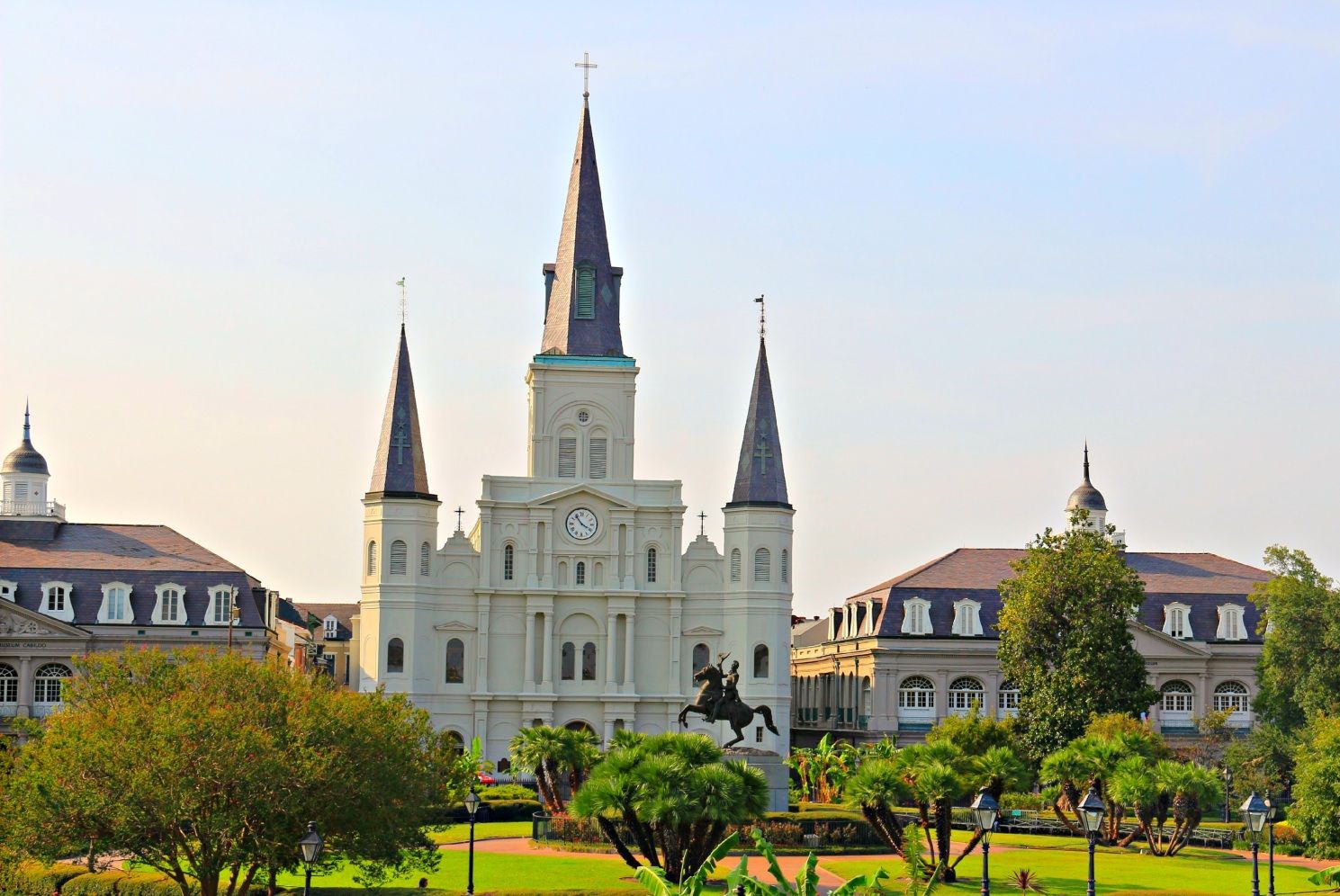

Neu-Taipeh (新北市, Xīnběi Shì, Tongyong Pinyin Sinběi Shìh, Pe̍h-oē-jī Sin-pak Chhī), offizieller englischer Name New Taipei City,[1] ist mit etwa 3,9 Millionen Einwohnern die größte Stadt der Republik China auf Taiwan.
Neu-Taipeh entstand im Dezember 2010 durch die Fusion aller 29 Städte und Gemeinden des ehemaligen Landkreises Taipeh im Norden Taiwans und hat seitdem den Status einer regierungsunmittelbaren Stadt.
新北市,通称“新北”(台湾话:Sin-pak;客家话:xinˊ bedˋ(四縣);sinˋ bed(海陸);Sîn-pet(白話字);闽东语:新北,平话字:Sĭng-báe̤k;莆仙语:Sing-bah),是位于台湾北部的中华民国直辖市,由原台北县改制而来,全境环绕台北市,东北则三面环绕基隆市,东南邻宜兰县,西南邻桃园市。其所辖石门区富贵角地处台湾本岛最北端,贡寮区三貂角地处台湾本岛最东端。全市划分为29区,其中行政中心为板桥区;设籍人口约4百万人,为台湾人口最多的建制市及一级行政区。
新北市的人口高度集中于台北盆地,以石门区富贵角跟乌来区与桃、宜交界的巴博库鲁山的连线划分东、西半部,人口差距达十倍之多,呈现不对称发展。清治时代前与淡水河右岸(今台北市区)各自发展,随着战后人口的不断移入,现今的新北市发展成以淡水河-新店溪左岸各区为台北都会区次中心的多核心都市,多数市区有如台北都会区的卫星城市或卧城。其有高度都市化的区域,也有乡村风情与自然山川风貌,地景样貌多元,人口组成及经济产业具多样性[3][4]。
新北市,位于中国台湾北部,面积2052.5平方千米。2015年人口396.6万人,是台湾省六个直辖市之一、台湾省第一大城市。
新北市中北包围台北市,东北三面环绕基隆市,东面接壤宜兰县,西面相邻桃园市,北向东海,西北濒临台湾海峡。市中心为台北盆地边缘,西北为滨海平原,其余地带均为丘陵和山地,海岸线长度120千米,最长河流淡水河长度128.7千米。新北市属于亚热带季风气候,年均气温23℃,5~9月份降雨居多。
新北市原先是平埔族和泰雅族的活动范围;17世纪中期,汉族移民开始到此定居开垦;明郑时期1661年,属于天兴县;1684年进入清治时期,属于诸罗县;1723年设立淡水厅;1875年设立台北府;1895年进入日治时期,属于台北州;1945年进入民国时期,设立台北县;2010年升格为新北直辖市,市政府驻扎板桥区。
新北市经济产业主要为金融业、商业、服务业、工业、餐饮业、旅游业,2012年全市GDP840.1亿美元,人均GDP21311.5美元。
新北市在台北都会区扩大以及升格直辖市的双重效应下,现今已经逐渐发展成为台北都会区次中心的多核心都市,其人口众多并且汇集许多来自台湾各地移民,有高度都市化的区域,也有乡间风情与自然山川风貌,样貌多元,人口组成及经济产业具多样性,堪称是台湾省社会的缩影。

Neu-Delhi (englisch New Delhi; Hindi नई दिल्ली IAST Naī Dillī; Urdu نئی دہلی; Panjabi ਨਵੀਂ ਦਿੱਲੀ) ist die Hauptstadt Indiens, Sitz der indischen Regierung, des Parlaments und der obersten Gerichte. Neu-Delhi ist ein relativ kleiner Teil der Megastadt Delhi, der mit 31,87 Millionen Einwohnern drittgrößten Metropolregion der Welt (Stand 2021),[2] und verfügt innerhalb des Nationalen Hauptstadtterritoriums Delhi über eine eigene Kommunalverwaltung, die 2011 ein Gebiet mit rund 250.000 Einwohnern umfasste.
Der Grundstein Neu-Delhis wurde während der Kolonialzeit am 15. Dezember 1911 südlich des damaligen Stadtzentrums Shahjahanabad gelegt, um Calcutta als Hauptstadt Britisch-Indiens abzulösen.[3]
Das Verhältnis zwischen den Namen Delhi und Neu-Delhi ist komplex. Neu-Delhi ist ein Teil der Metropole Delhi, die als National Capital Territory of Delhi („Nationales Hauptstadtterritorium Delhi“) von der indischen Zentralregierung mitverwaltet wird. Im engeren Sinn bezeichnet Neu-Delhi nur das während der britischen Kolonialzeit planmäßig angelegte Regierungsviertel, welches lediglich einen sehr kleinen Teil des Hauptstadtterritoriums umfasst und im Wesentlichen mit den Grenzen der kommunalen Verwaltungseinheit Neu-Delhi übereinstimmt. Mit dem davon zu unterscheidenden Distrikt Neu-Delhi besteht aber noch eine weitere administrative Einheit gleichen Namens mit anderer Grenzziehung.
Im alltäglichen Sprachgebrauch wird Neu-Delhi oft erheblich weiter gefasst. Als Neu-Delhi gegründet wurde, bestand Delhi in erster Linie aus der ummauerten Altstadt von Shahjahanabad (Old Delhi, Alt-Delhi). Durch das rasante Bevölkerungswachstum wurden nach der indischen Unabhängigkeit nach und nach auch die umliegenden, einstmals ländlichen Gebiete urbanisiert. Diese „neuen“ Teile Delhis werden entsprechend auch häufig zu Neu-Delhi gezählt. Heute wird die Bezeichnung Neu-Delhi somit oft komplementär zu Alt-Delhi für alle Gebiete Delhis außerhalb von Shahjahanabad benutzt. Vielfach sind die Namen Delhi und Neu-Delhi aber auch gänzlich austauschbar.
新德里(又译纽德里,印地语:नई दिल्ली;英语:New Delhi)是印度的首都,印度联邦政府所在地,也是印度大都市区德里的一个区。它位于印度西北部,座落在恒河支流亚穆纳河西岸,东北紧连旧德里(沙贾汉纳巴德)。整个德里国家首都辖区面积1,482平方公里,人口1,637万(2011年);其中新德里人口1,337万。2013年4月“世界城市区域研究”(Demographia World Urban Areas)发布第9届调查报告,世界大都市依照人口数排名第4,约2,282万人。[4]新德里是全国的政治、经济和文化中心。新德里是典型的放射型城市,城市以姆拉斯广场为中心,城市街道成辐射状、蛛网式地伸向四面八方。宏伟的建筑群大多集中于市中心。政府主要机构集中在市区从总统府到印度门之间绵延几公里的宽阔大道两旁。国会大厦为大圆盘式建筑,四周绕以白色大理石高大圆柱,是中亚式的建筑,屋檐和柱头的雕饰又为印度风格。总统府屋顶为巨大的半球形结构,带有莫卧儿王朝的遗风。城市西端的康瑙特市场建筑新巧,呈圆盘形,是新德里的最大商业中心。新德里还是全国交通的中心,有5条国家级公路、6条铁路与各地相通,还建有两座机场。新德里的奠基石是乔治五世在1911年德里杜尔巴期间奠定的。它由英国建筑师埃德温·鲁琴斯爵士和赫伯特·贝克爵士设计。新首都于1931年2月13日由印度总督艾文勋爵揭幕。

 Financial
Financial
 ***Global Financial Center
***Global Financial Center

 History
History
 M 1500 - 2000 AD
M 1500 - 2000 AD

 History
History
 N 2000 - 2100 AD
N 2000 - 2100 AD

 International cities
International cities
 ***Global Urban Economic Competitiveness
***Global Urban Economic Competitiveness
 Silk road
Silk road
 Singapore
Singapore

 Important port
Important port
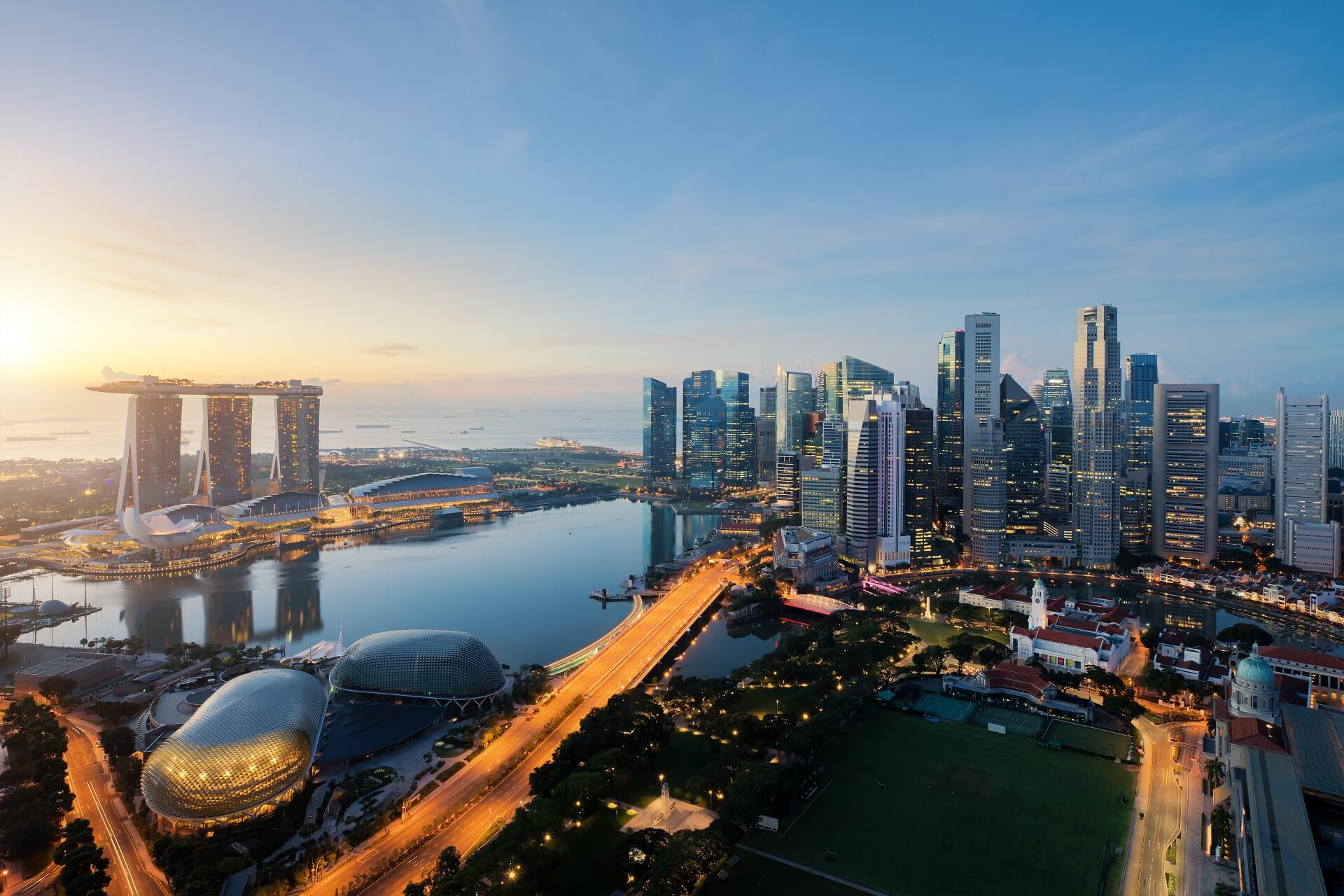
Singapur (amtlich Republik Singapur, englisch Republic of Singapore [ɹɪˈpʰʌb.lɪkʰ.əv.ˈsɪŋ.(g)ə.pʰɔː], malaiisch Republik Singapura, chinesisch 新加坡共和国, Pinyin Xīnjiāpō Gònghéguó, auch: 新加坡 [ɕin.tɕiɑ.pʰuɔ], Tamil சிங்கப்பூர் குடியரசு Ciṅkappūr Kudiyarasu) ist ein Insel- und Stadtstaat und der flächenmäßig kleinste Staat Südostasiens. Er ist Mitglied im Commonwealth of Nations.
Beim Index der menschlichen Entwicklung belegte Singapur 2018 den neunten Platz.[6] Singapur ist eines der reichsten Länder (und Städte) weltweit und gilt als eine der Städte mit den weltweit höchsten Lebenshaltungskosten.[7] Zudem zählt der Stadtstaat mit mehr als elf Millionen ausländischen Touristen im Jahr zu den zehn meistbesuchten Städten der Welt[8] und gilt neben Hongkong als wichtigster Finanzplatz Asiens. Singapur ist ein multiethnischer Staat, in dem Chinesen, Malaien und Inder die größten Bevölkerungsteile stellen.
新加坡共和国(英语:Republic of Singapore;马来语:Singapura;泰米尔语:சிங்கப்பூர் குடியரச),通称新加坡,是东南亚中南半岛南端的一个城邦岛国、城市国家。该国位于马来半岛南端,扼守马六甲海峡最南端出口,其南面有新加坡海峡与印尼相隔,北面有柔佛海峡与西马来西亚相隔,并以新柔长堤与第二通道等这两座桥梁相连于新马两岸之间。新加坡的国土除了新加坡本岛之外,还包括周围所属岛屿,新加坡最大的外岛为德光岛。从新加坡独立以来,大规模的填海已经为新加坡增加了23%的面积,相等于增加了130平方公里。
1819年,任职于英国不列颠东印度公司的斯坦福·莱佛士与柔佛苏丹签订条约,获准在新加坡建立交易站和殖民地,经莱佛士的努力,逐渐发展成繁荣的转口港。由于地理位置特殊,新加坡在第二次世界大战以前一直是大英帝国在东南亚最重要的战略据点。1942年至1945年间,新加坡曾被日本占领三年半之久,其后回归英国管理,并从海峡殖民地独立出来,1959年成立自治邦,1963年加入马来西亚成为一个州,称为新加坡州(简称星州)。1965年8月9日,马来西亚国会以126票赞成、0票反对,同意将新加坡驱逐出联邦。新加坡共和国正式成立,李光耀为总理,尤索夫·伊萨为总统。新加坡被驱逐马来西亚后独立建国。
自1965年独立后,新加坡从穷困潦倒中,依靠着国际贸易和人力资本的操作,迅速转变成为富裕的亚洲四小龙之一,同时凭借着地理优势,新加坡也是亚洲重要的金融、服务和航运中心之一。教育素质良好的国民也是亚洲政治和科学文化的纽带,大多数的新加坡人都通晓至少两种语言,分别是英语以及自己的母语。新加坡是个多元文化种族的社会,也是全球最国际化的国家之一,所以主要由华人组成的新加坡并非为单一民族国家,而是和一部分马来人及印度人所组成的移民国家,其中华人文化以福建移民为大宗[6]。在国内居住的居民有38%为永久居民、持有工作签证的外籍劳工以及持有学生签证的学生,建筑业和服务业的外劳比例分别为80%和50%[7][8][9][10]。整个城市在绿化和环境卫生方面效果显著,故有花园城市之美称。
シンガポール共和国(シンガポールきょうわこく、英語: Republic of Singapore、マレー語: Republik Singapura、簡体字: 新加坡共和国、繁体字: 新加坡共和國、タミル語: சிங்கப்பூர் குடியரசு)、通称シンガポールは、東南アジアに位置し、シンガポール島及び60以上の小規模な島々からなる共和制国家[4]。
同国は、北はジョホール海峡により半島マレーシアから、南はシンガポール海峡によりインドネシアのリアウ諸島州から各々切り離されている。同国は高度に都市化され、原初の現存植生はほとんどない。シンガポールの領土は、一貫して埋立てにより拡大してきた。
シンガポールは、教育・エンターテインメント・金融・ヘルスケア・人的資本・イノベーション・ロジスティクス・製造・技術・観光・貿易・輸送の世界的な中心である。多くの国際順位で格付けされており、最も「テクノロジー対応」国(WEF)、国際会議のトップ都市(UIA)、世界で最もスマートな都市である「投資の可能性が最も高い」都市(BERI)、世界で最も安全な国、世界で最も競争力のある経済、3番目に腐敗の少ない国、3番目に大きい外国為替市場、3番目に大きい金融センター、3番目に大きい石油精製貿易センター、5番目に革新的な国、2番目に混雑するコンテナ港湾。2013年以来、エコノミストはシンガポールを「最も住みやすい都市」として格付けしている[5][6][7][8]。
シンガポールは、すべての主要な格付け機関からAAAソブリン格付けを持つ、アジアで唯一の国であり、世界11か国のうちの1つである。シンガポール航空は2018年の「世界最高の航空会社」であり、世界的にはシンガポール港とチャンギ国際空港がそれぞれ「マリタイムキャピタル」と「ベスト空港」のタイトルを連続して獲得している[9][10]。
シンガポールは、1人当たりGDPが2番目に高く、国連人間開発指数で9位である、主権国にとってアジアで最高。これは、教育・医療・平均余命・生活の質・個人の安全・住宅などの主要な社会的指標に高く置かれており、人口の90%が家の所有者である。
Singapore (/ˈsɪŋ(ɡ)əpɔːr/ ( listen)), officially the Republic of Singapore, is a sovereign city-state and island country located in maritime Southeast Asia. Singapore lies about one degree of latitude (137 kilometres or 85 miles) north of the equator, and is situated off the southern tip of the Malay peninsula, and, by extension, the southernmost extremity of continental Eurasia. The island country is wedged between western Indonesia and peninsular Malaysia, sharing its southern maritime border with the Batam, Bintan, and Karimun archipelago of the former's Riau Islands province, and its northern, western, and eastern maritime borders with the latter's Johor state; it is additionally in the vicinity of Sumatra to its west and Borneo to its east. The island country is enveloped by the littoral waters of the Johore Strait to its north and the Singapore Strait to its south, and is geographically positioned within the confluence of the Indian and Pacific Oceans, being bounded by the Malacca Strait to its west and the South China Sea to its east. The country's territory, which is archipelagic, is composed of one main island, 63 satellite islands and islets, and one outlying islet, the combined area of which has increased by 25% since the country's independence as a result of extensive land reclamation projects.
listen)), officially the Republic of Singapore, is a sovereign city-state and island country located in maritime Southeast Asia. Singapore lies about one degree of latitude (137 kilometres or 85 miles) north of the equator, and is situated off the southern tip of the Malay peninsula, and, by extension, the southernmost extremity of continental Eurasia. The island country is wedged between western Indonesia and peninsular Malaysia, sharing its southern maritime border with the Batam, Bintan, and Karimun archipelago of the former's Riau Islands province, and its northern, western, and eastern maritime borders with the latter's Johor state; it is additionally in the vicinity of Sumatra to its west and Borneo to its east. The island country is enveloped by the littoral waters of the Johore Strait to its north and the Singapore Strait to its south, and is geographically positioned within the confluence of the Indian and Pacific Oceans, being bounded by the Malacca Strait to its west and the South China Sea to its east. The country's territory, which is archipelagic, is composed of one main island, 63 satellite islands and islets, and one outlying islet, the combined area of which has increased by 25% since the country's independence as a result of extensive land reclamation projects.
Throughout its millennia-long history, Singapore—historically known by the names Pulau Ujong, Temasek, and subsequently Singapura—was a maritime emporium that fell under the suzerainty of several successive Indianised and Islamicate Malay polities: initially a series of ancient to medieval Hindu-Buddhist thalassocratic empires, subsequently a medieval localised Hindu-Buddhist kingdom, and ultimately two medieval to early modern Islamic sultanates.[14][Note 8] The 1819 arrival of Stamford Raffles, a British colonial officer, and the subsequent establishment of a British East India Company trading post on the main island—then part of the Johor Sultanate—marked the genesis of modern Singapore. Five years later, the British and Dutch East India companies partitioned the Sultanate, with the British coercively wresting Singapore from the Sultan in the process, marking the cessation of indigenous rule over the island for the first time in its history. In 1826, Singapore was incorporated into the Straits Settlements, a pan-Malayan presidency of the Company with Penang as capital,[15][Note 9] and in 1830, the Settlements were annexed to British India as a residency, where they would be governed from the capital of Calcutta under two administrations—until 1858 under Company rule, and—following the Company's collapse in the wake of the 1857 Indian Rebellion—until 1867 under the successive British Raj. In 1867, the administration of the Settlements was transferred to London, bringing them under the direct control of the United Kingdom as a Malayan crown colony.[16][17][18]
From 1867 to the 1940s, Singapore, having taken over Penang as capital of the Settlements, grew into a thriving entrepôt and settler-colony under the auspices of the British Empire, attracting large numbers of non-indigenous settlers and sojourners from the region and beyond.[19] During the Second World War, Imperial Japan invaded and annexed Singapore, resulting in an interregnum of British colonial rule corresponding with a brief but bloody Japanese occupation from 1942 to 1945. Following Japan's surrender in 1945, Singapore was returned to British control; in 1946, the Straits Settlements were dissolved, and Singapore became a standalone crown colony. In 1959, following a protracted period of agitation against colonial rule, Singapore was granted limited autonomy; in 1963, it became fully emancipated from the British Empire upon its federation with the territories of the erstwhile British Malaya and British Borneo to form the new country of Malaysia.[Note 10] However, after two tumultuous years as a constituent state of the Malaysian Federation, marred by violent ethnoreligious strife and other intractable differences between indigenous and non-indigenous groups, Singapore was expelled in 1965, becoming the first country in modern history to gain independence against its will—although this narrative remains contentious.[Note 11] After early years of turbulence, the newly sovereign nation—viewed as a nonviable state by international observers due to its diminutiveness, geostrategic vulnerability, absence of natural resources, and lack of a hinterland—defied odds by rapidly developing and industrialising under the leadership of the inaugural People's Action Party to become a high-income economy and developed country within a single generation.
Singapore is a unitary parliamentary constitutional republic with a unicameral legislature that has been characterised by dominant-party rule since independence. It is considered a soft authoritarian technocratic state; the Economist Intelligence Unit rated Singapore a "flawed democracy" in 2019.[21] It is the only truly sovereign city-state in the world; it has its own currency and a well-funded military that is considered the most advanced in Southeast Asia.[22] The country is home to 5.6 million residents, 61% (3.4 million) of whom are Singaporeans; as a legacy of its historical nature as an entrepôt and settler-colony, modern Singapore is a pluralistic country with a racially, culturally, and religiously diverse citizenry,[23][24] with one indigenous ethnic group, the Malays, and two settler-descended ethnic groups, the Chinese and Indians, forming the historical and contemporary core of the citizen populace. As a reflection of this pluralism, multiracialism has been enshrined as a foundational principle of the state, and has shaped the country's politics and national policies. The country, which is Anglophone, has four official languages: English, Malay, Chinese, and Tamil; Malay, as the ancestral language of the country, is accorded protected status in the country's constitution as the national language, while English is the lingua franca, being spoken as a common tongue by the vast majority of Singaporeans.
Singapore is one of the five founding members of ASEAN, is the headquarters of the Asia-Pacific Economic Cooperation (APEC) Secretariat and Pacific Economic Cooperation Council (PECC) Secretariat,[25] is a member of the United Nations, World Trade Organization, East Asia Summit, Non-Aligned Movement, and the Commonwealth of Nations, and is a recurrent guest invitee to the annual G20 summit;[26] its outsized influence on global affairs, relative to its size, has lead to it being classified as a middle power.[27][28] The country is the most developed sovereign nation in Asia, being ranked 9th on the UN Human Development Index, and has the 7th highest GDP per capita in the world.[29][30] It is also considered by Transparency International to be the most incorruptible nation in Asia, and the fifth most incorruptible worldwide. Singapore is placed highly in key social indicators: education, healthcare, quality of life, personal safety and housing, with a home-ownership rate of 91%. Singaporeans enjoy one of the world's longest life expectancies and one of the lowest infant mortality rates in the world.[31] As a city, Singapore is classified as an Alpha+ global city, and is the only country in Asia with an AAA sovereign rating from all major rating agencies. It is a major financial and shipping hub, consistently ranked the most expensive city to live in since 2013, and has been identified as a tax haven.[32][33] Singapore is also a popular tourist destination, with well-known landmarks such as the Merlion, Marina Bay Sands, Gardens by the Bay, the Jewel, the Orchard Road shopping belt, the resort island of Sentosa, and the Singapore Botanic Gardens, the only tropical garden in the world to be honoured as a UNESCO World Heritage Site.[34][35]
Singapour, en forme longue la république de Singapour (en anglais : Singapore et Republic of Singapore, en chinois : 新加坡 (Xīnjiāpō) et 新加坡共和国 (Xīnjiāpō Gònghéguó), en malais : Singapura et Republik Singapura, en tamoul : சிங்கப்பூர் (Ciṅkappūr) et சிங்கப்பூர் குடியரசு) (Ciŋkappūr Kudiyarasu), est une cité-État d’Asie du Sud-Est. Sa superficie est de 719,1 km2. Elle comprend 63 îles, dont la principale est Pulau Ujong (584,8 km2). Cette île est très densément urbanisée, mais la végétation luxuriante – même en plein centre-ville – a valu à Singapour le surnom de « ville jardin ». Cette abondance de verdure découle en partie d'un climat équatorial, uniformément chaud et orageux tout au long de l'année. Sa densité de population est la plus élevée d'Asie et la deuxième sur le plan mondial.
L'État de Singapour est situé à l'extrême sud de la péninsule Malaise, dont il est séparé au nord par le détroit de Johor, et borde au sud le détroit de Singapour. Il est connu et souvent montré en exemple pour son extraordinaire réussite économique. Après l'indépendance de l'Empire britannique en 1958, le rattachement à la Malaisie en 1963, puis l'indépendance en 1965, Singapour a su devenir, avec très peu de ressources naturelles et des problèmes socio-économiques importants – émeutes raciales, chômage massif, difficultés de logement et d'accès à l'eau –, l'un des pays les plus développés et les plus prospères du monde, en termes d'économie, d'éducation, de santé, de sécurité et d'urbanisme. La ville, cité souveraine, est un réduit chinois au cœur même du monde malais : la population est majoritairement composée de Chinois (74,3 %). De cette confrontation ethnique sont nés en partie les troubles qui ont accéléré son retrait de la Malaisie, le 9 août 19656.
Dans les années 1980, le pays fait partie, avec Hong Kong, la Corée du Sud et Taïwan, des quatre dragons asiatiques, des États en transition et au développement économique effréné. En 2011, Singapour est le troisième pays au monde en termes de produit intérieur brut à parité de pouvoir d'achat (PPA) par habitant après le Qatar et le Luxembourg7. Plaque tournante commerciale et financière entre la zone Pacifique et l'Europe, la ville doit son essor à sa situation maritime exceptionnelle à l'extrémité Est du détroit de Malacca, qui lui vaut le surnom de : Cité marchande aux confins de l'Orient. Elle possède le deuxième port au monde (après Shanghai) en termes d'exportations et de trafic maritime. La population singapourienne dispose d'un très haut niveau de vie et la Cité-État est souvent surnommée La Suisse d'Asie8. En 2009, Singapour affichait ainsi la plus forte concentration de millionnaires rapportés à la population totale devançant Hong Kong (Chine), la Suisse, le Qatar et le Koweït9.
Présentant une stabilité politique remarquable, Singapour est considéré aujourd'hui comme une « démocratie autoritaire » ou « dictature bienveillante », avec la même famille au pouvoir depuis l'indépendance. La cité-État est donc considérée comme un pays pratiquant le libéralisme économique sans le libéralisme politique.
Le centre-ville est situé dans le sud de l'île de Pulau Ujong, à l'embouchure de la rivière Singapour (Singapore River). Il comprend un centre d'affaires qui a fait de la ville la quatrième place financière au monde, ainsi que différents quartiers ethniques (chinois, malais, et indien) et une grande zone commerciale autour d'Orchard Road.
Singapore (AFI: /sinɡaˈpore/[5]), ufficialmente Repubblica di Singapore (in malese Republik Singapura; in inglese Republic of Singapore; in cinese 新加坡共和国, Xīnjiāpō Gònghéguó; in tamil சிங்கப்பூர் குடியரசு, Ciŋkappūr Kudiyarasu), è una città-Stato del sud-est asiatico, situata sull'estrema punta meridionale della penisola malese, 152 km a nord dell'equatore. Si sviluppa su un arcipelago formato da 58 isole, la più grande e principale delle quali è l'isola di Singapore che ospita la metropoli. A nord Singapore è separata dalla Malaysia dallo Stretto di Johor, a sud è separata dalle indonesiane isole Riau dallo Stretto di Singapore.
La città-Stato è il quarto principale centro finanziario del mondo[6] ed è una delle principali città cosmopolite del globo, con un importante ruolo nel commercio internazionale e nella finanza. Il suo porto è tra i primi cinque per attività e traffico su scala mondiale.[7]
Singapore è un Paese con una lunga storia di immigrazione. Ha una popolazione variegata e gli oltre 5 milioni di abitanti sono composti prevalentemente da cinesi, malesi, indiani e altre discendenze di asiatici ed europei.[8]
Il 42% della popolazione è straniero, qui presente per lavoro o studio. I lavoratori stranieri costituiscono il 50% del settore dei servizi.[9][10]
Singapore è il secondo Paese più densamente popolato del mondo dopo il Principato di Monaco e nel 2009 ha raggiunto la più alta concentrazione di milionari in rapporto alla popolazione, davanti a Hong Kong, Svizzera, Qatar e Kuwait.[11]
Singapur, oficialmente República de Singapur (en inglés: Republic of Singapore; en chino: 新加坡共和国 [Xīnjīapō Gònghéguó]; en malayo: Republik Singapura; y en tamil: சிங்கப்பூர் குடியரசு [Siṅkappūr Kuṭiyarasu]), es un país soberano insular de Asia, formado por sesenta y tres islas, cuya forma de gobierno es la república parlamentaria.
Su territorio se divide en cinco consejos de desarrollo comunitario. Su capital es la ciudad de Singapur, por lo que Singapur se considera una ciudad-estado. Está situado al sur del Estado de Johor en la península de Malasia y al norte de las islas Riau de Indonesia, separada de estas por el estrecho de Singapur. Con 697 km²,1 es el país más pequeño del Sudeste Asiático. Su territorio ha crecido constantemente con tierras ganadas al mar.
Desde el siglo II d. C., cuando se establecieron allí los primeros humanos, la isla de Singapur ha formado parte de varios imperios regionales. El moderno Singapur fue fundado en 1819 por el británico Thomas Stamford Raffles como puesto comercial de la Compañía Británica de las Indias Orientales con el permiso del Sultanato de Johor. El Reino Unido obtuvo la soberanía sobre la isla en 1824 y esta pasó a ser una de las Colonias del Estrecho británicas en 1826. Ocupada por los japoneses durante la Segunda Guerra Mundial, Singapur declaró su independencia del Reino Unido en 1963 como un estado más de Malasia mediante un referéndum de incorporación, de la que se separó dos años después. Desde entonces la ciudad-estado ha prosperado rápidamente y se ha ganado la distinción de ser uno de los «cuatro tigres asiáticos».
Singapur es una de las principales ciudades globales y uno de los centros neurálgicos del comercio mundial, contando con el tercer mayor centro financiero y el segundo puerto que más mercancías mueve. Su economía globalizada y diversificada depende especialmente del comercio y del sector manufacturero. En términos de paridad de poder adquisitivo, Singapur es el tercer país con mayor renta per cápita del mundo, además de figurar entre los primeros países en las listas internacionales de educación, sanidad, transparencia política y competitividad económica.
Políticamente, Singapur es una república parlamentaria multipartidista con un gobierno parlamentario unicameral inspirado en el sistema Westminster británico. El Partido de Acción Popular ha ganado todas las elecciones desde que el país obtuvo la independencia. Sin embargo, las libertades civiles y de expresión están sumamente restringidas y se dan casos de censura por parte del Gobierno, por lo que está considerado como un país con rasgos tanto democráticos como autoritarios.4 La población, unos cinco millones de habitantes, es muy diversa: alrededor de dos millones son de origen extranjero y entre los nativos, el 75 % son chinos y el resto minorías de malayos, indios o euroasiáticos. Esta diversidad tiene su reflejo en los cuatro idiomas oficiales del país, que son el inglés, el chino, el malayo y el tamil, así como en las políticas gubernamentales que promueven el multiculturalismo.5
Singapur es uno de los miembros fundadores de la Asociación de Naciones del Sudeste Asiático y ha sido sede del secretariado del Foro de Cooperación Económica Asia-Pacífico, además de formar parte de la Cumbre de Asia Oriental, del Movimiento de Países No Alineados y de la Mancomunidad de Naciones. El rápido desarrollo del país lo ha llevado a tener una influencia importante en los asuntos internacionales y a que algunos analistas lo consideren una potencia intermedia.67
Республика Сингапу́р (англ. Republic of Singapore; малайск. Republik Singapura, ريڤوبليق سيڠاڤورا; кит. трад. 新加坡共和國,
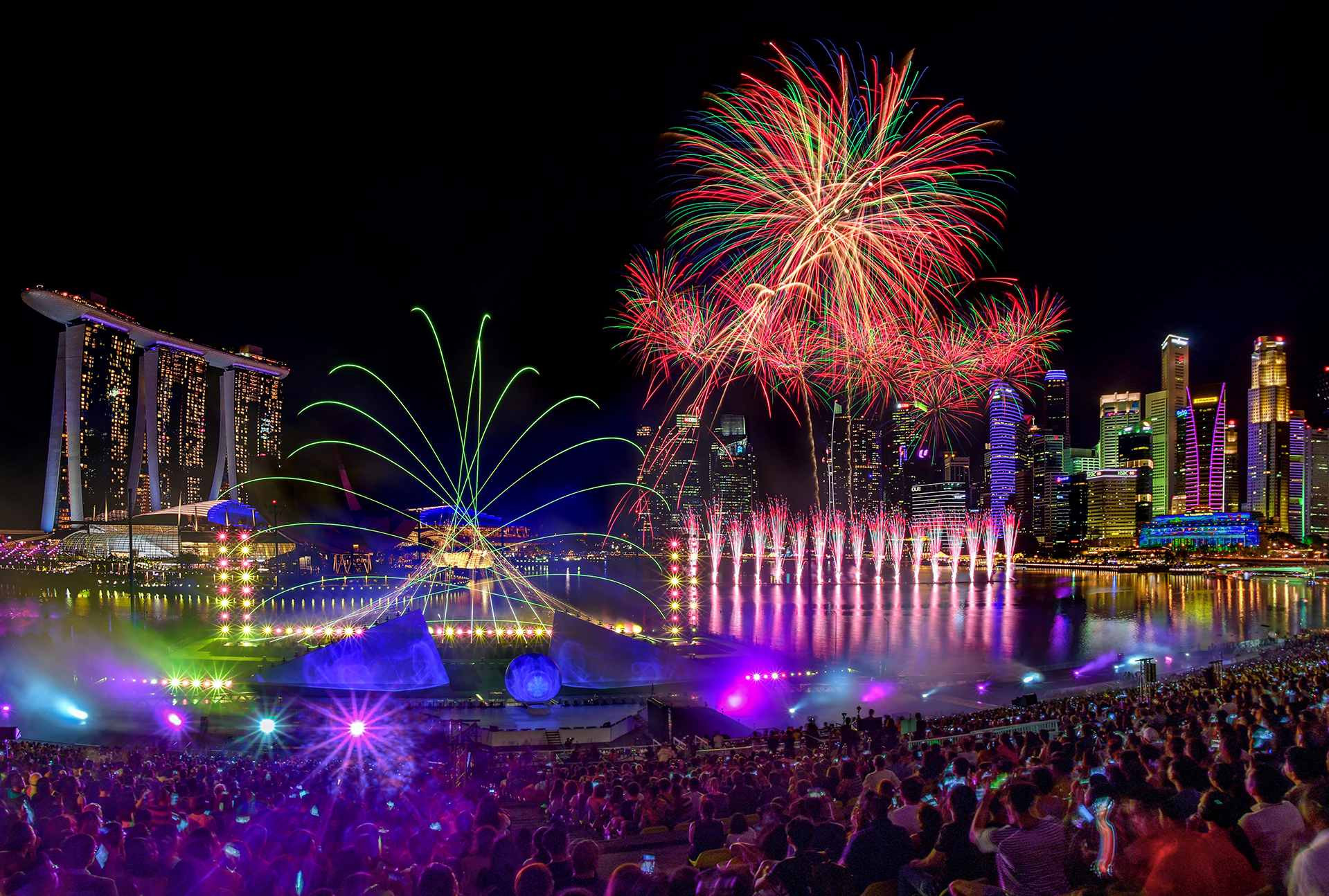

 Grand Est
Grand Est
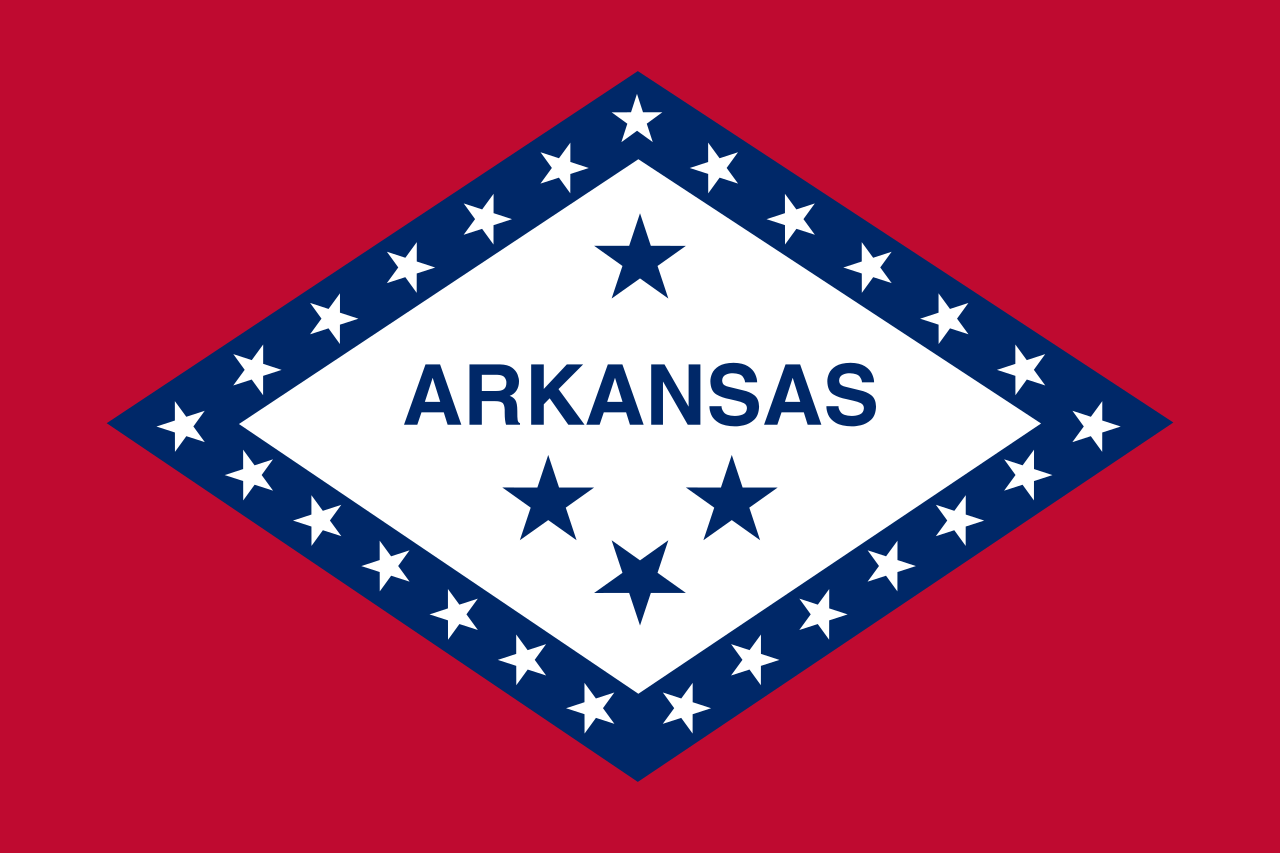 Arkansas-AR
Arkansas-AR
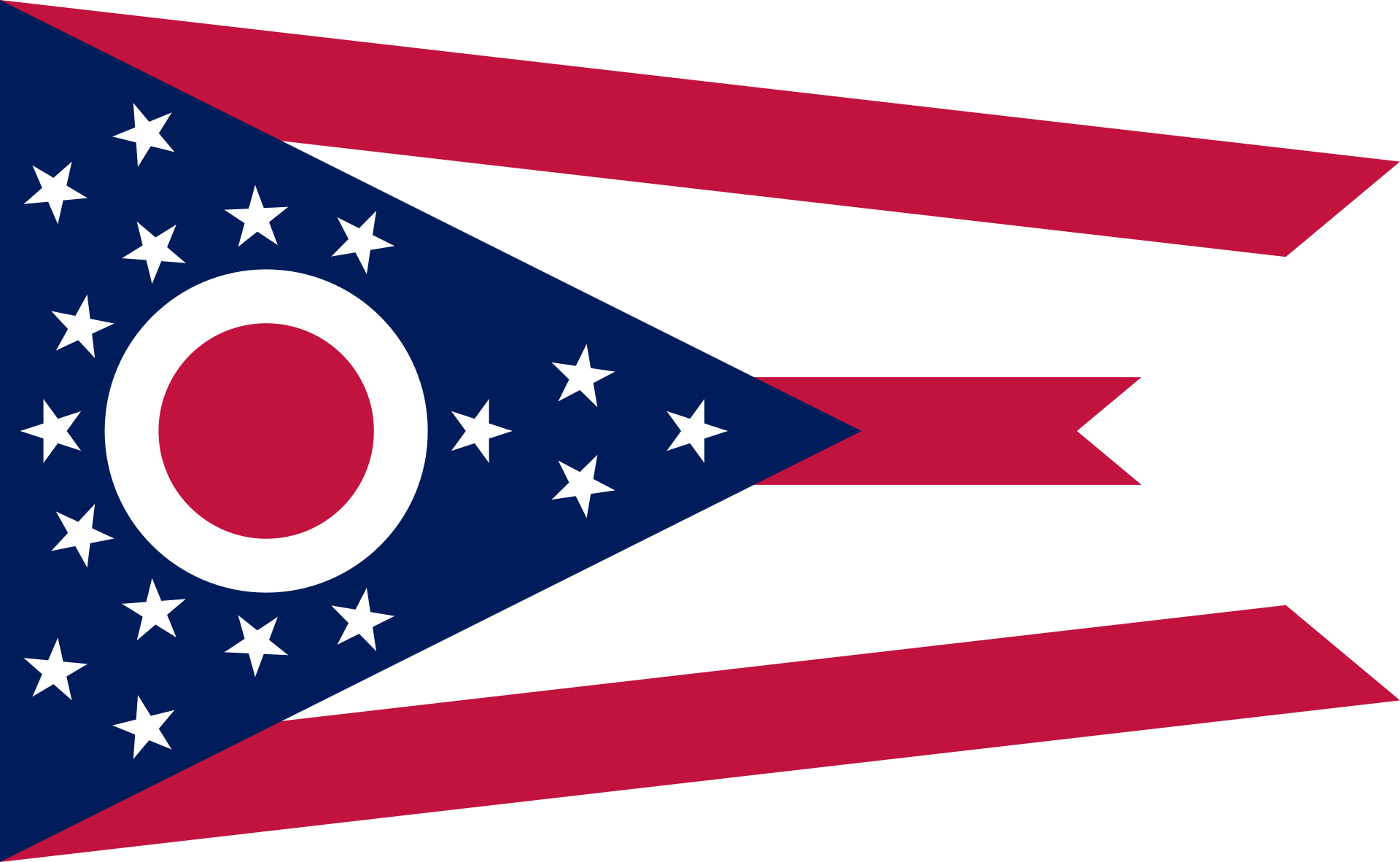 Ohio-OH
Ohio-OH
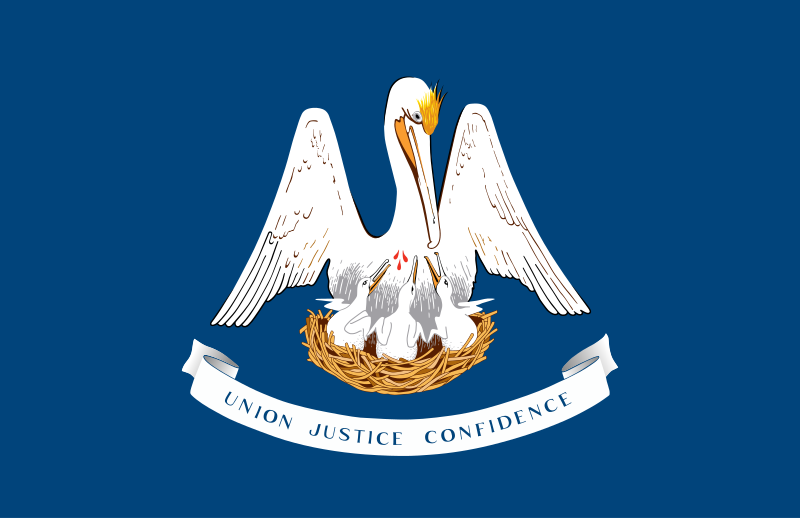 Louisiana-LA
Louisiana-LA